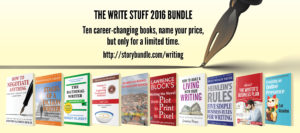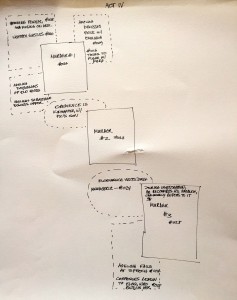 I have several maxims that I have developed over the course of my writing career. One of them is, “If Kris Rusch invites you into a project, you say yes.” Because Kris is one of the people who understands independent publishing and its possibilities, and she is a savvy, savvy marketer.
I have several maxims that I have developed over the course of my writing career. One of them is, “If Kris Rusch invites you into a project, you say yes.” Because Kris is one of the people who understands independent publishing and its possibilities, and she is a savvy, savvy marketer.
When Kris came and asked about including my book Creating an Online Presence in a Storybundle, I was thrilled and also a little panicked, because I knew it had to be updated before it went in there. Too much had happened on the Internet in the two and a half years since I’d first put it up. I was also flattered that she thought the book was worth including, because I value her opinion.
And the truth is, if you’re a writer, you do need to at least think about this stuff enough to make an informed decision. If you’re being traditionally published, your publisher will probably expect you to be helping out with the marketing in the form of social media or other Internet efforts. Every book launch, for example, seems to involve a slew of guest blog posts and similar promotions.
If you’re small press published, again the publisher will probably expect you to be helping out with the marketing and I would regard a lack of such expectations as a possible danger sign.
And if you’re going indie, there’s no way around it. You’re going to have to think about this stuff, and the more you do, the more it will pay off — IF you are writing good stuff and making that the focus, not the marketing.
The world is changing rapidly in many aspects; publishing is definitely part of that change. Writers must stay informed of that if they want to make a living at it. Look at this Storybundle. E-bundles are easy to do and even easier to download. Storybundle and Humblebundle have both been making big strides in this area. Kobo lets you bundle your books, I found out in talking to Mark Lefebvre from Kobo last weekend at the Nebulas.
Here’s what you get beside the brand new version of Creating an Online Presence:
- The Rational Writer, Nuts and Bolts by Mindy Klasky
- Weinberg on Writing – The Fieldstone Method by Gerald M. Weinberg
- How to Make a Living With Your Writing by Joanna Penn
- Heinlein’s Rules – Five Simple Business Rules For Writing by Dean Wesley Smith
- How to Negotiate Anything – Freelancer’s Survivor Guide by Kristine Kathryn Rusch
- Stages of a Fiction Writer by Dean Wesley Smith
- Writing the Novel from Plot to Print to Pixel by Lawrence Block
- Business For Breakfast Vol 2.: The Beginning Professional Publisher by Leah Cutter
- The Writer’s Business Plan: A Plain English Guidebook by Tonya D. Price, MBA
Part of the success of such bundles is using online marketing like this very blog post. So please — help me out by spreading the word of this excellent bundle (which might make a great graduation gift for a new writer) and its contents.
#sfwapro





12 Responses
RT @Catrambo: Storybundling the Write Stuff: https://t.co/oDcoL4wq4Q
RT @Catrambo: Storybundling the Write Stuff: https://t.co/oDcoL4wq4Q
RT @Catrambo: Storybundling the Write Stuff: https://t.co/oDcoL4wq4Q
RT @Catrambo: Storybundling the Write Stuff: https://t.co/oDcoL4wq4Q
Storybundling the Write Stuff https://t.co/9itv90XEty
RT @KristineRusch: Storybundling the Write Stuff https://t.co/9itv90XEty
“…if you’re a writer, you do need to at least think about this stuff…” https://t.co/2QAp7c7pds https://t.co/QTtOJsClPm
RT @storybundle: “…if you’re a writer, you do need to at least think about this stuff…” https://t.co/2QAp7c7pds https://t.co/QTtOJsClPm
RT @storybundle: “…if you’re a writer, you do need to at least think about this stuff…” https://t.co/2QAp7c7pds https://t.co/QTtOJsClPm
RT @storybundle: “…if you’re a writer, you do need to at least think about this stuff…” https://t.co/2QAp7c7pds https://t.co/QTtOJsClPm
RT @storybundle: “…if you’re a writer, you do need to at least think about this stuff…” https://t.co/2QAp7c7pds https://t.co/QTtOJsClPm
RT @storybundle: “…if you’re a writer, you do need to at least think about this stuff…” https://t.co/2QAp7c7pds https://t.co/QTtOJsClPm